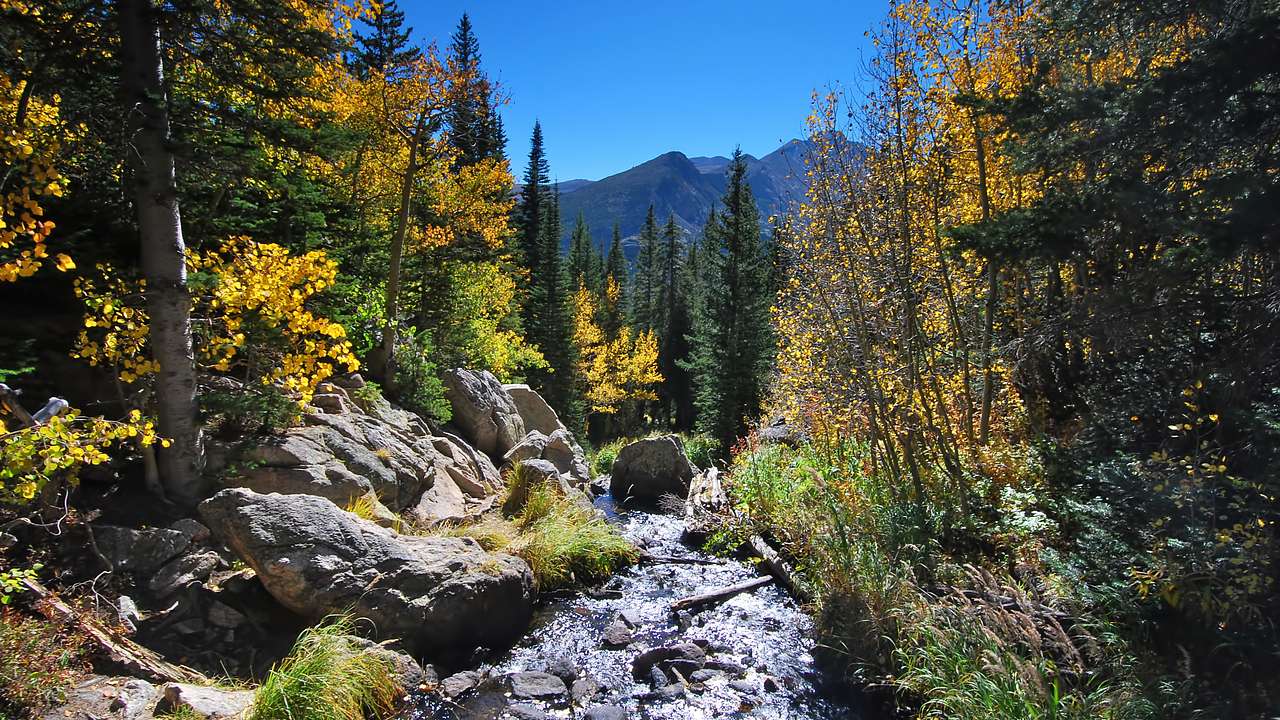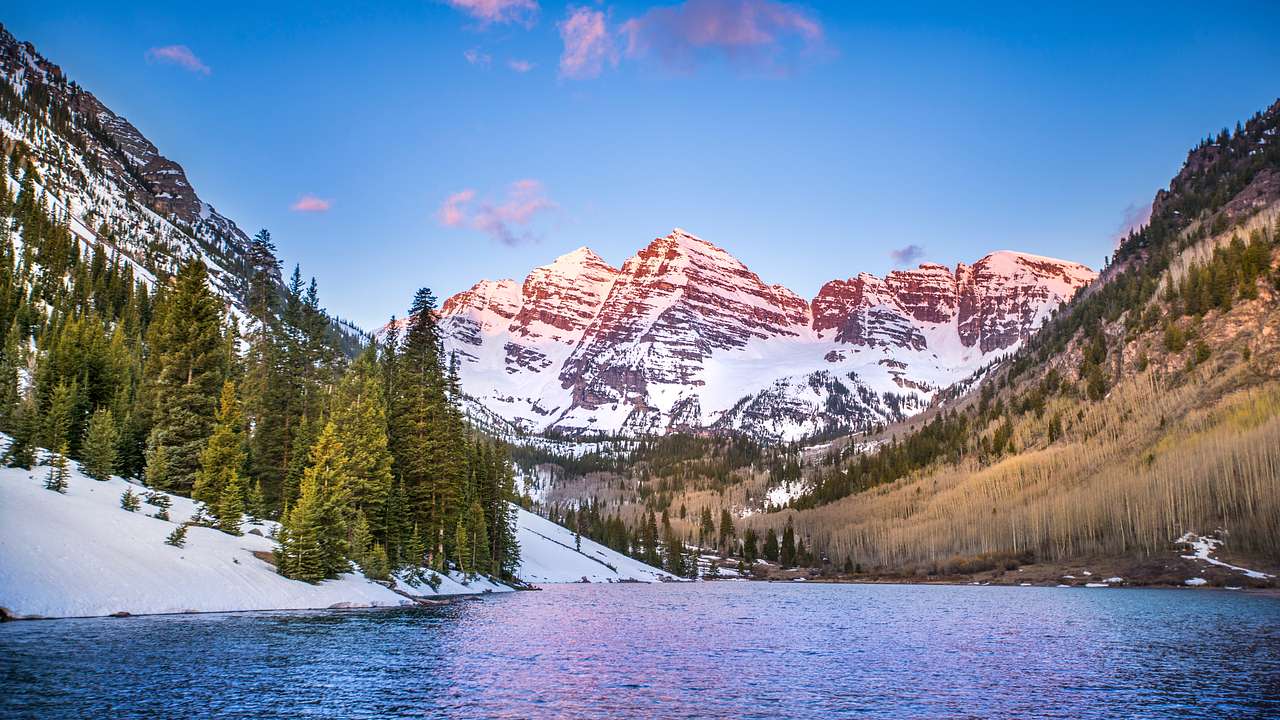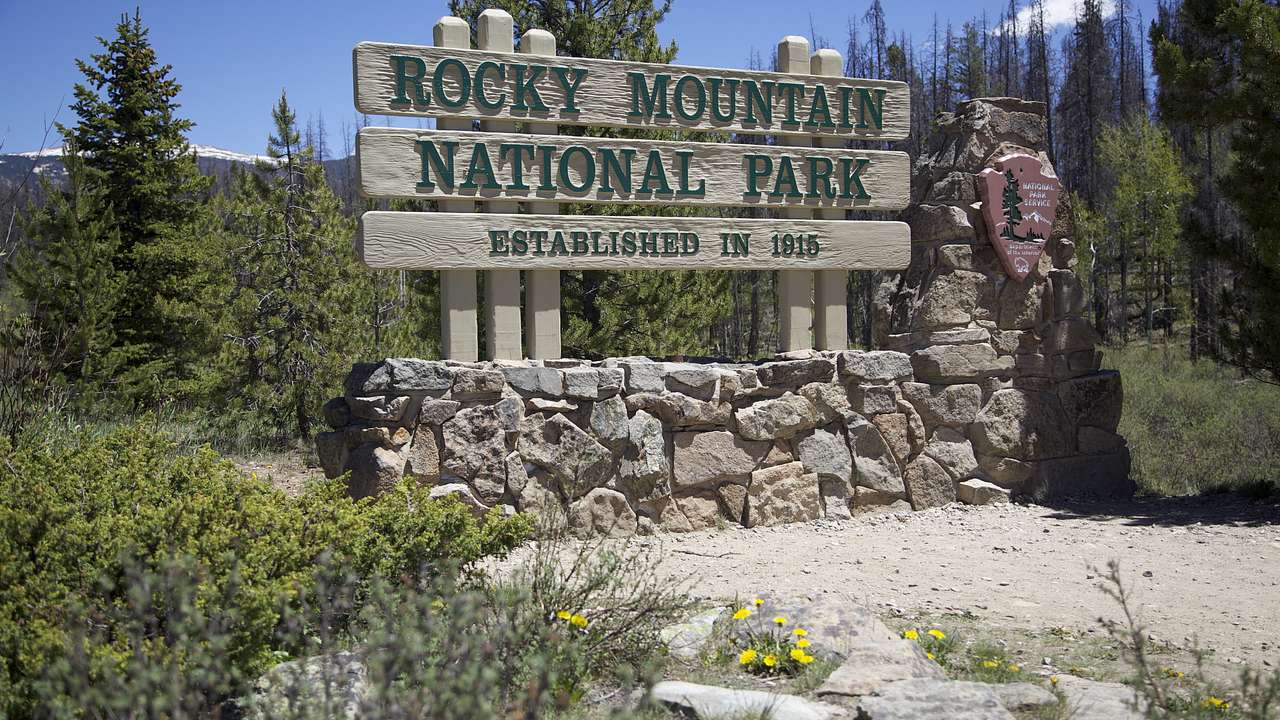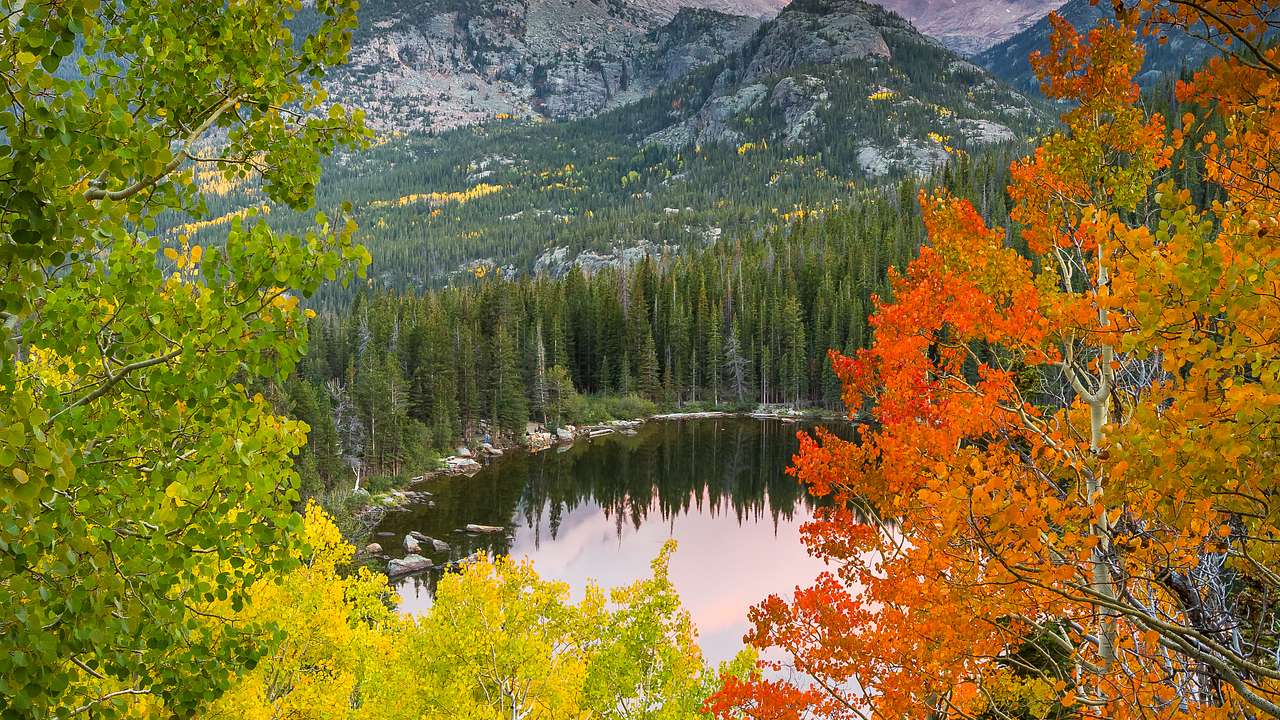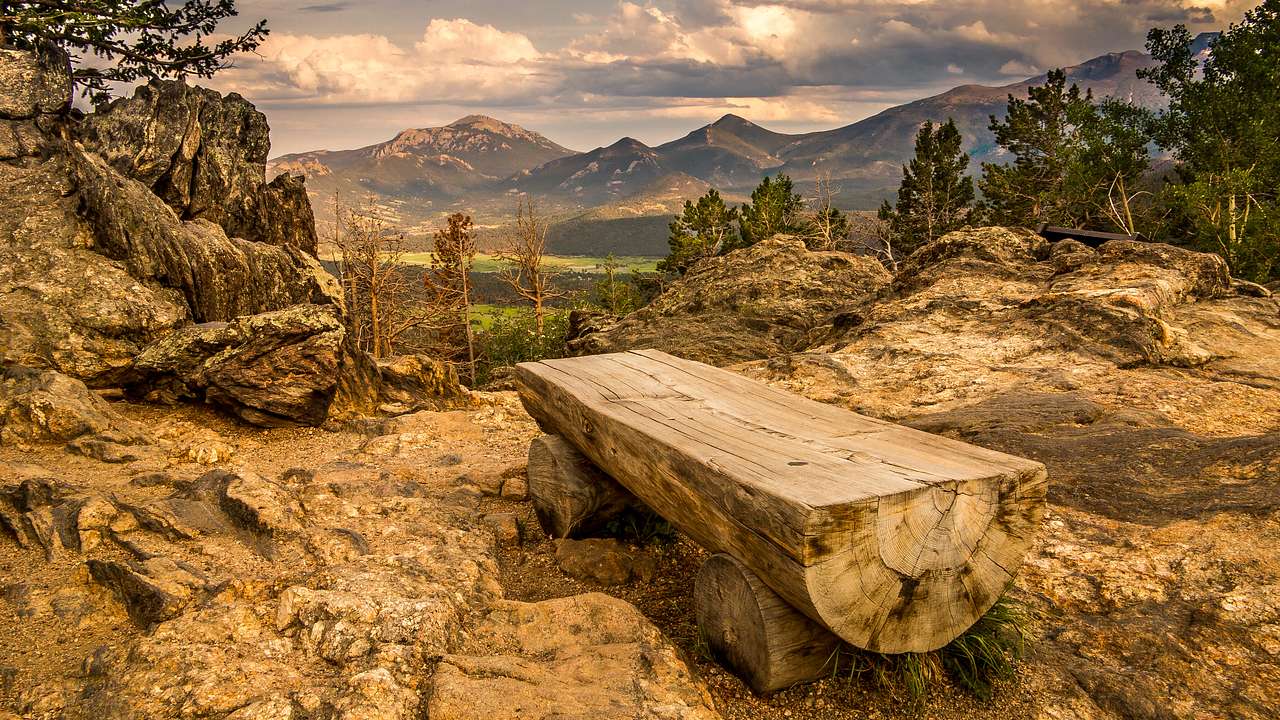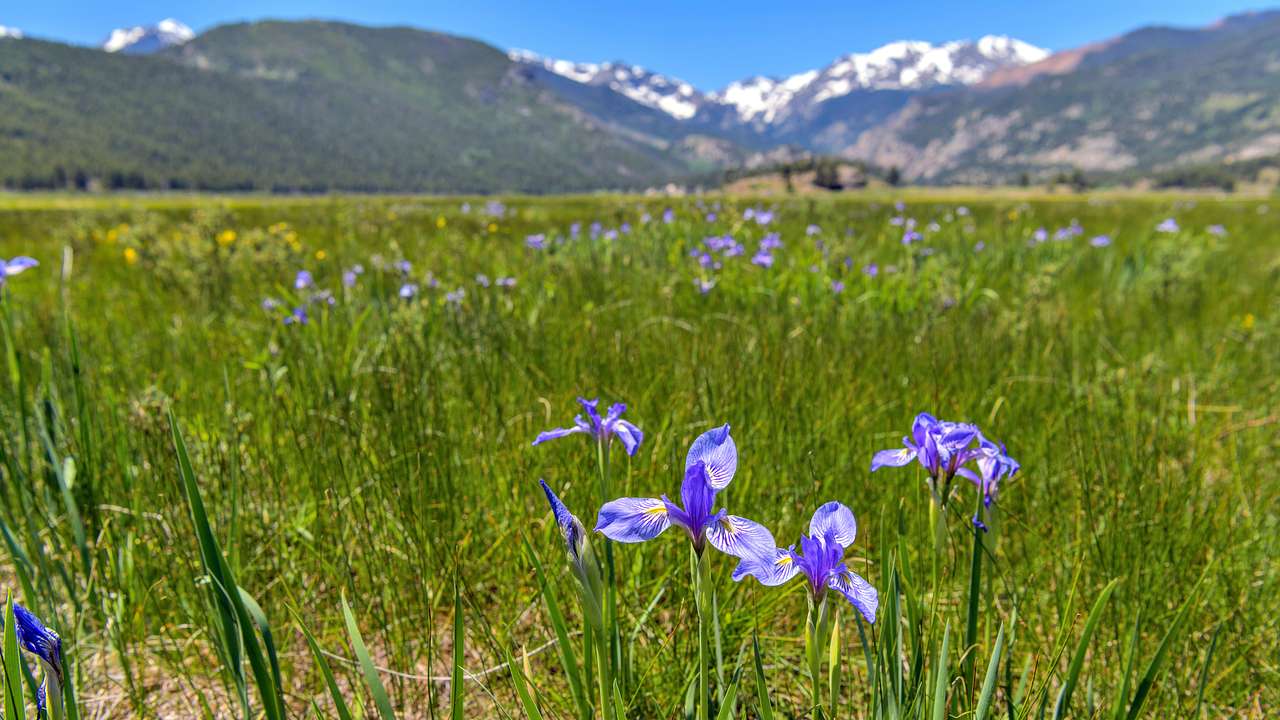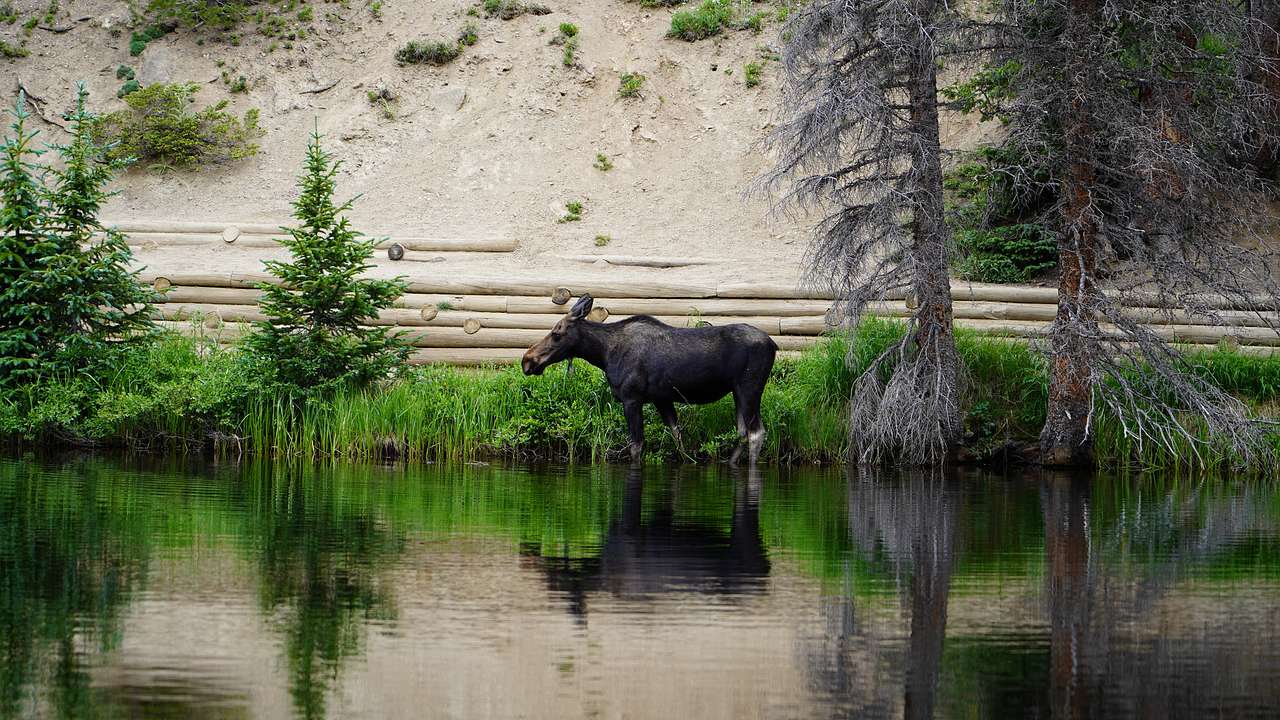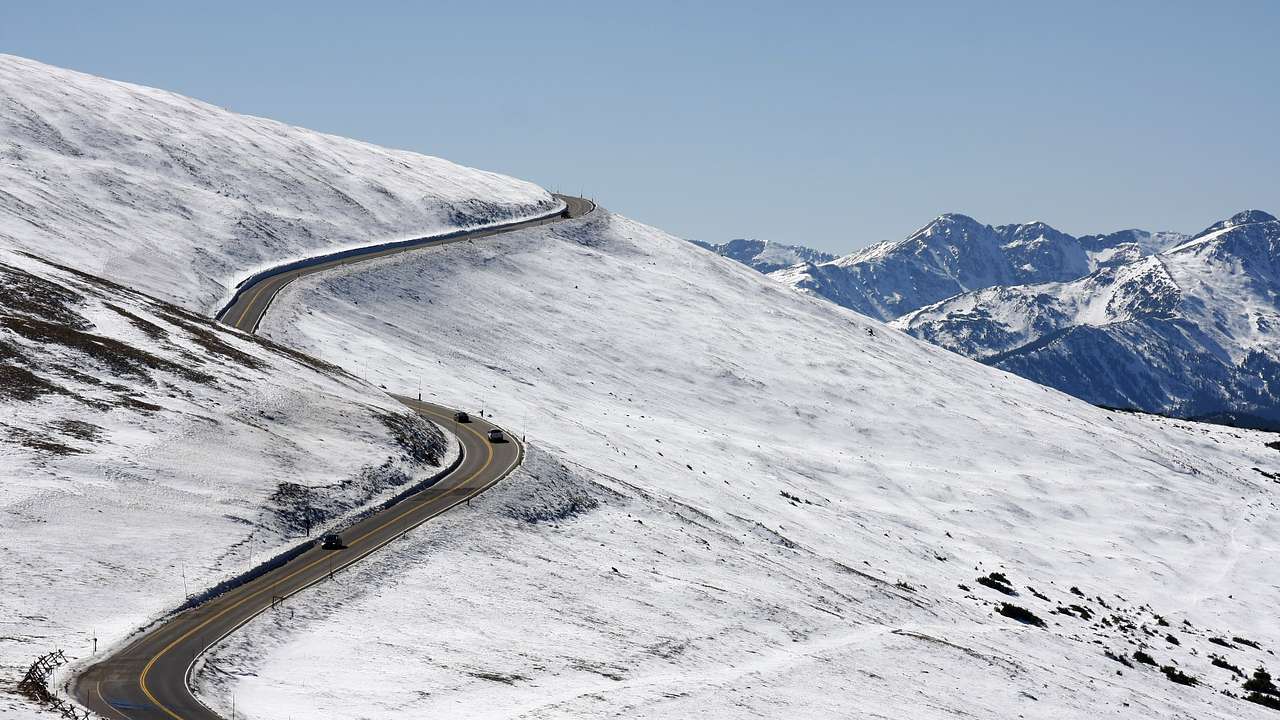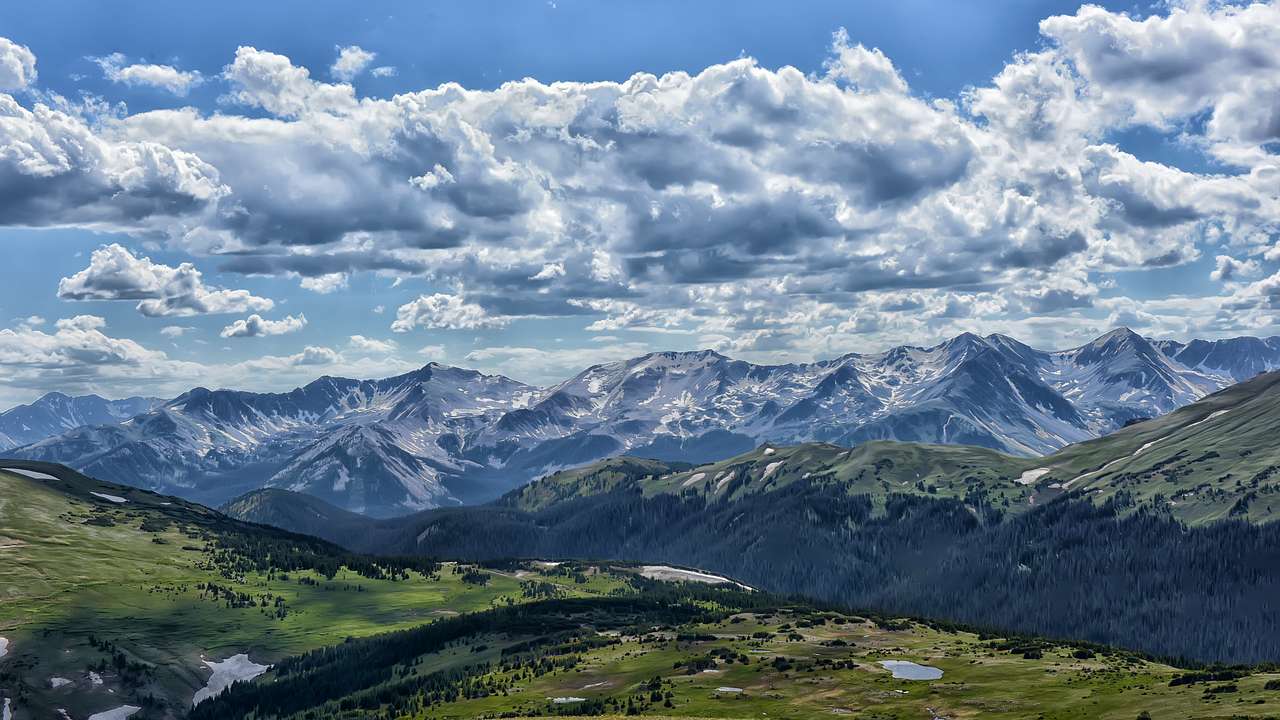Best Time to Visit Rocky Mountain National Park
Destguides may receive commissions from purchases made through affiliate links in this article.
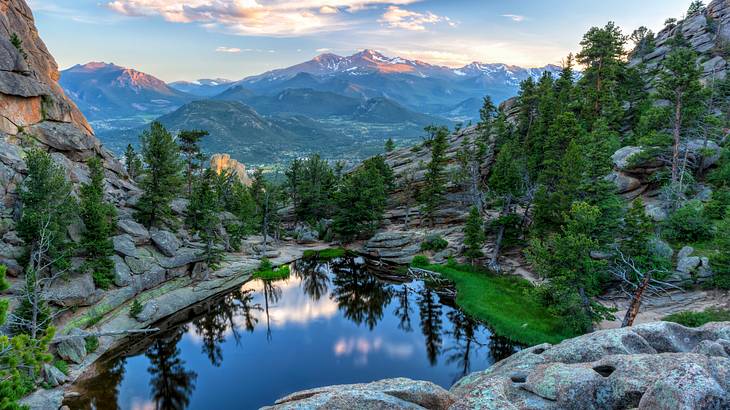
Rocky Mountain National Park is situated on the continental divide and covers over 400 miles of mountainous terrain in northern Colorado. It is a land of extremes for its varying environments and climate. The park is also home to the highest continuous paved road in the United States. Trail Ridge Road, aptly nicknamed "highway to the sky," is one of the most scenic highways in the US.
Over 4 million people visit Rocky Mountain National Park annually, making it one of the most visited National Parks in the United States. With over 300 miles of hiking trails, sparkling glacial lakes, rock climbing, and snowshoeing, Rocky Mountain National Park is an outdoor adventurer's paradise.
Deciding when to visit Rocky Mountain National Park can be tricky as many areas of the park are sometimes inaccessible due to high snowfall. Read on to learn more about the best time to visit Rocky Mountain National Park.
Planning a last-minute trip to Rocky Mountain National Park?
Before traveling to Rocky Mountain National Park, book your accommodations and experiences ahead of time. We've pulled together top suggestions below.
🏨 Top accommodations in Rocky Mountain National Park
- Blue Door Inn (rated highly)
- Quality Inn Near Rocky Mountain National Park (relax by the pool)
- Appenzell Inn
☂️ Top tour and experience in Rocky Mountain National Park
Best Time to Go to Rocky Mountain National Park
-
Rocky Mountain National Park Vacation Planning Questions
- When is the best time to visit Rocky Mountain National Park?
- What is the closest airport to Rocky Mountain National Park?
- Where are the best views in Rocky Mountain National Park?
- How to get to Rocky Mountain National Park?
- What is the typical weather in the Rocky Mountains?
- What is the cost to enter Rocky Mountain National Park?
- When is the best time to see fall colors in Rocky Mountain National Park?
- When is the best time to hike Rocky Mountain National Park?
- When is the best season to visit Rocky Mountain National Park?
- When is the best time to see moose in Rocky Mountain National Park?
- What is the best route through Rocky Mountain National Park?
-
Weather, Prices, and Crowds in Rocky Mountain National Park
- Rocky Mountain National Park in January
- Rocky Mountain National Park in February
- Rocky Mountain National Park in March
- Rocky Mountain National Park in April
- Rocky Mountain National Park in May
- Rocky Mountain National Park in June
- Rocky Mountain National Park in July
- Rocky Mountain National Park in August
- Rocky Mountain National Park in September
- Rocky Mountain National Park in October
- Rocky Mountain National Park in November
- Rocky Mountain National Park in December
Rocky Mountain National Park Best Time to Visit Tips Video
Check out our highlights video of Rocky Mountain National Park best time to visit tips.
Rocky Mountain National Park Vacation Planning Questions

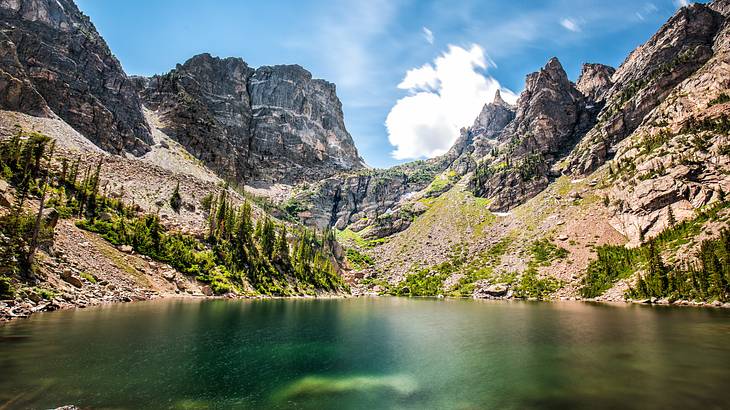
When is the best time to visit Rocky Mountain National Park?
The best time to visit Rocky Mountain National Park is during summer or fall. These times have the best weather, most trail accessibility, and most wildlife viewing opportunities.
Summer in Rocky Mountain National Park is June, July, and August. During this time, the weather is pleasant, with daytime temperatures ranging from the 60s to the 80s degrees Fahrenheit. All roads and hiking trails are open, and wildflower meadows are in full bloom. Bighorn sheep, elk, and mule deer are commonly spotted around the park in the summer.
Fall in Rocky Mountain National Park is September, October, and November. Daytime temperatures are still comfortable enough to be outdoors, with ranges from the 40s to 60s degrees Fahrenheit. Fall is moose and elk mating season at Rocky Mountain National Park, so large herds can often be seen.

What is the closest airport to Rocky Mountain National Park?
The closest major airport to Rocky Mountain National Park is Denver International Airport in Denver, Colorado. Denver International Airport is approximately 80 miles from Rocky Mountain National Park, and it takes a little less than two hours to drive from the airport to the park.
There is also a smaller airport in the vicinity. The Cheyenne Regional Airport is across the border in Cheyenne, Wyoming, and is about 90 miles and two hours from Rocky National Park.
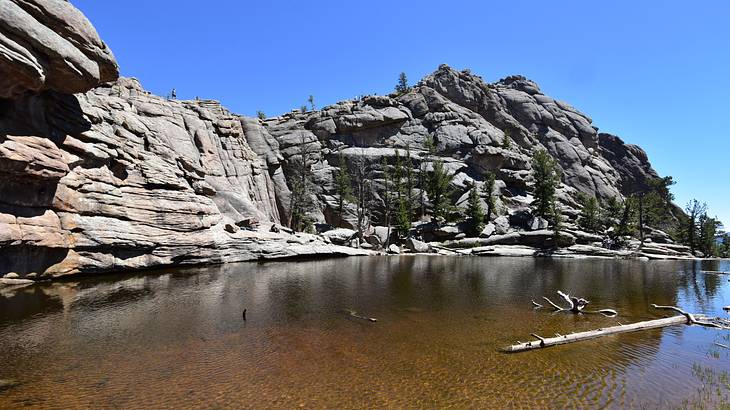
Where are the best views in Rocky Mountain National Park?
Rocky Mountain National Park is full of gorgeous views, from the mountains to the lakes and sprawling meadows full of wildlife. While the entire park is scenic, a few areas are considered the best places to visit in Rocky Mountain National Park.
Bear Lake is one of the most popular areas of the park. On a calm day, the water reflects a mirror-like view of the mountains above it. Gem Lake is another popular area famous for its towering granite walls surrounding the lake and contributing to the unique landscape. It is known as one of the best hikes in Rocky Mountain National Park.
Kawuneeche Valley is famed for its wildlife viewing, especially moose. Trail Ridge Road offers numerous scenic drives and breathtaking scenic overlooks. For waterfall views, Alberta Falls are another visitor favorite, with large boulders surrounding the 30-foot veil of cascading water.
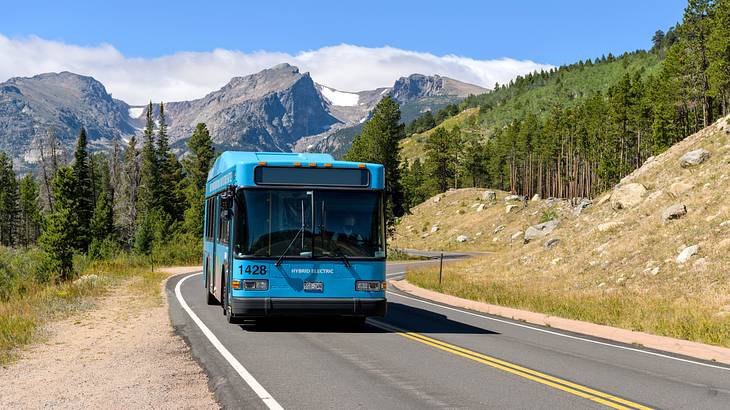
How to get to Rocky Mountain National Park?
Unless you are coming from Colorado or surrounding states, most visitors fly to nearby Denver International Airport. From there, it's about a two-hour drive to Rocky Mountain National Park.
For those who don't wish to rent a car, there are connecting trains and buses to transport you to the park from the airport. Once inside the park, the Rocky Mountain National shuttle regularly runs along the park's main roads and is a great way to get around.
There are also private Rocky Mountain National Park tours. Their tour buses will transport you to some of the best sights in Rocky Mountain National Park.
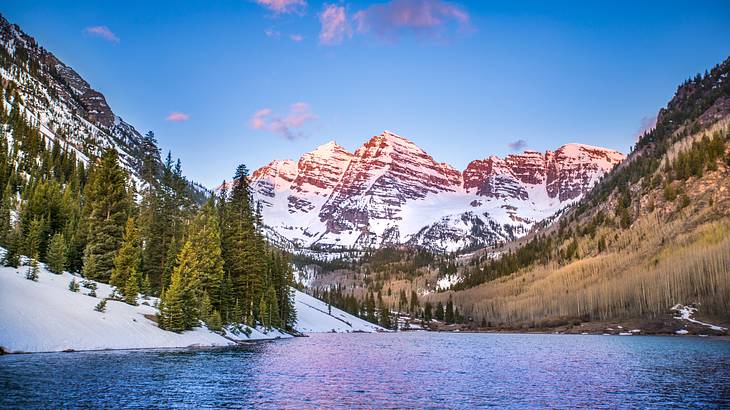
What is the typical weather in the Rocky Mountains?
Weather in the Rocky Mountains can vary drastically by season and elevation. While winter is the coldest throughout the park, higher elevations can have snow for eight months.
Winter and spring (December through May) are the coldest, with temperatures typically ranging from -0 to 50 degrees Fahrenheit. Many roads within the park are closed due to heavy snowfall.
Summer and fall (June through November) have the mildest weather, with temperatures from the 30s to 80s degrees Fahrenheit. The summer months of June, July, and August also see the most rainfall.
Rocky Mountain National Park covers over 400 square miles of changing landscapes. The weather can vary by location within the park, as well as by elevation points.
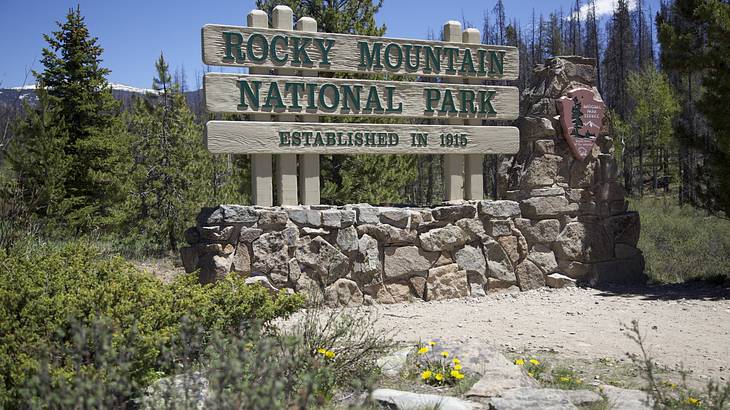
What is the cost to enter Rocky Mountain National Park?
The current entrance fee to enter Rocky Mountain National Park ranges from $25 to $35 (US dollars) per vehicle. Cost is determined based on the type of vehicle and length of stay, and park passes are sold in either single-day or week-long increments. Visitors who arrive on foot will pay a per-person fee of $15 (US dollars).
US Military Veterans and Gold Star Families are granted free entrance to Rocky Mountain National Park. There are also certain US holidays throughout the year that National Parks are free to enter, including Veterans Day, National Public Lands Day, and National Park Week. Eligible holidays and the dates they fall on vary from year to year, so visitors should check the park's website for details.

When is the best time to see fall colors in Rocky Mountain National Park?
Late September through early October has the most impressive show of fall colors at Rocky Mountain National Park. Landscapes of vibrant yellows, oranges, and reds can be seen throughout the park during this time. The Sprague Lake Loop is considered the best hike at Rocky Mountain National Park to see all the fall colors.
In higher elevations of the park, leaves can change colors as early as August, and lower elevations typically begin in late September. Colorado's weather forecasters will regularly report on foliage forecasts based on the prevailing weather conditions. Sudden temperature changes can contribute to fall colors arriving earlier or later than expected.
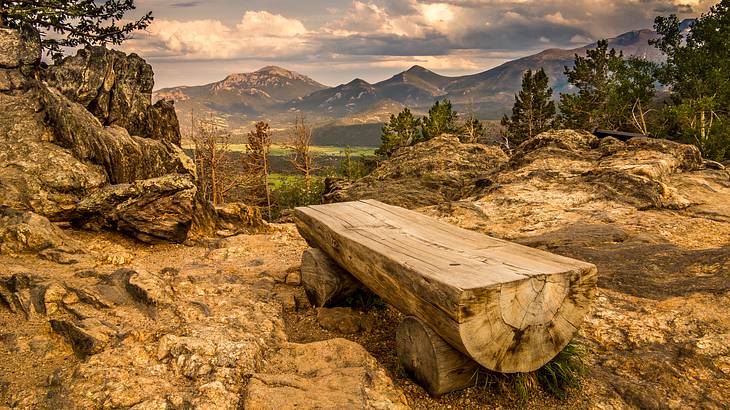
When is the best time to hike Rocky Mountain National Park?
The best time to hike at Rocky Mountain National Park is June through September. During these summer and early fall months, the roads and trails are more accessible, and the weather is pleasant for hiking.
July and August draw larger crowds as US schools are on summer break, and the park is one of the top drawcards in Colorado. Hikers looking for more alone time on the trails may find June or September a better bet. Guided Rocky Mountain hiking tours are also available for those wanting a more in-depth experience.
Rocky Mountain National Park has over 300 miles of hiking trails. Some have different weather conditions from others, especially within higher elevations. Check seasonal conditions for the specific areas you plan to hike to ensure you are fully prepared.
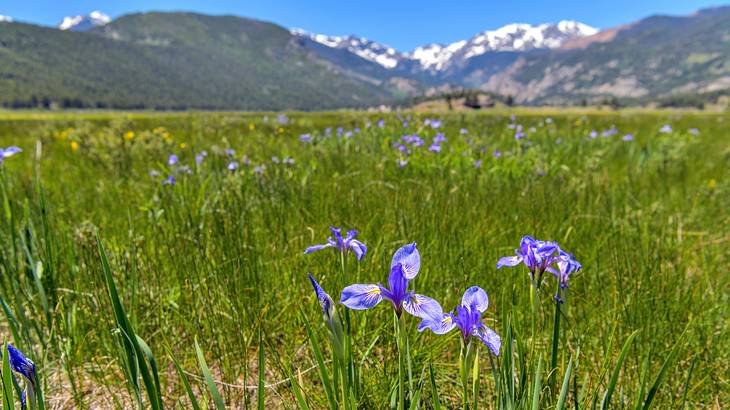
When is the best season to visit Rocky Mountain National Park?
The best season to visit Rocky Mountain National Park is summer, with fall coming a close second. The summer months of June, July, and August have some of the best weather, with temperatures ranging from 60 to 80 degrees Fahrenheit; it's a perfect time for hiking and other outdoor activities.
During the summer, all roads and hiking trails are accessible and picturesque, as the wildflower meadows are in bloom. Wildlife such as bighorn sheep, elk, and mule deer are also commonly spotted around the park in the summer.
The fall months of September, October, and November are suitable times to visit the park, with mostly comfortable temperatures and colorful foliage on display. Early fall is best to view the fall colors. October can bring early snowfall, which limits areas within the park.
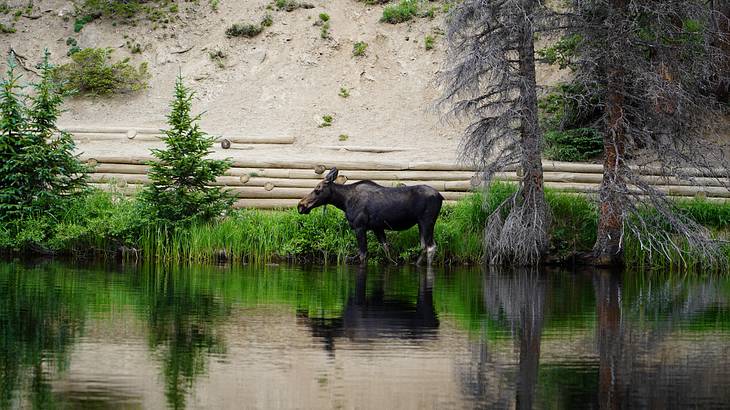
When is the best time to see moose in Rocky Mountain National Park?
The majestic moose is one of the most beloved features in Colorado. While moose can be seen in Rocky Mountain National Park throughout the year, the best time to spot them is in the fall months of September, October, and November--the moose mating months. You can spot larger groups in Kawuneeche Valley and along Highway 34, a major park road.
Moose frequent areas of the park with high aquatic vegetation and willow shrubs. You can often see them grazing on greenery or swimming in the lakes. Kawuneeche Valley is full of marshy landscapes and is a favorite grazing spot for moose within Rocky Mountain National Park.
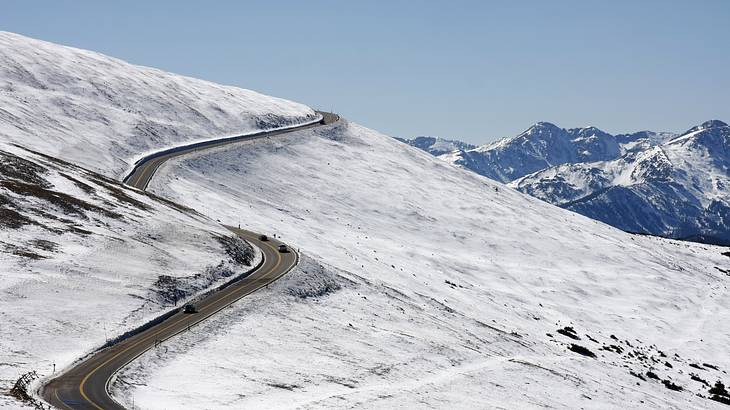
What is the best route through Rocky Mountain National Park?
The best route through Rocky Mountain National is along Trail Ridge Road. Nicknamed the "highway to the sky," Trail Ridge Road connects the park from east to west and reaches elevations of up to 12,000 feet. As the road winds through the mountains, travelers will be treated to endless scenic viewpoints and plenty of places to stop and hike.
Trail Ridge Road is only open from May to October; the remainder of the year has too many hazardous conditions with snow and high winds. Visitors to Rocky Mountain National Park will be restricted to the minor roads of the lower valleys until it becomes safe to go higher.
Weather, Prices, and Crowds in Rocky Mountain National Park
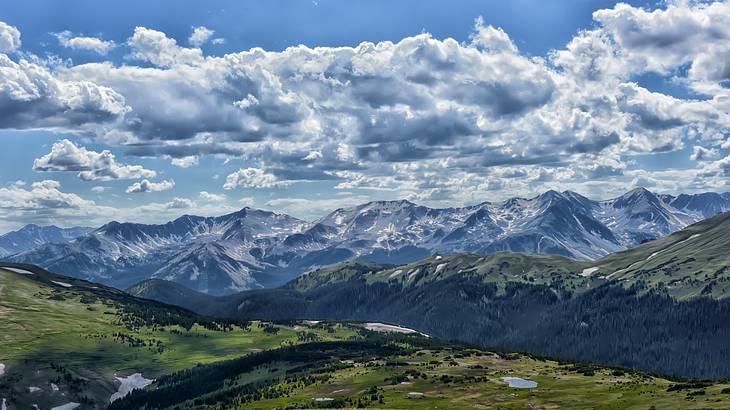
Rocky Mountain National Park in January
January is typically the coldest and least crowded month in Rocky Mountain National Park. Temperatures range from 16 to 30 degrees Fahrenheit, but blizzards with sub-zero temperature drops aren't uncommon.
Rocky Mountain National Park hotels offer their lowest prices in January as visitors are restricted to certain areas due to weather conditions. The park's main access road from east to west, Trail Ridge Road is inaccessible in winter. The lower valley's roads are usually open and lead to great hiking trails and scenic views.
Skiing and snowshoe tours are very popular in January and offer a unique way to traverse the park. For those looking for more icy adventures, ice climbing is usually available in January when the conditions are cold enough.
Rocky Mountain National Park in February
Rocky Mountain National Park in February is another freezing month, with temperatures ranging from 18 to 40 degrees Fahrenheit. Road access is still limited due to icy conditions.
The upside is that visitors in February can enjoy a much less crowded park and winter activities like skiing, snowshoeing, and ice climbing. Wildlife watching is a popular pastime in the park's lower elevations, with elk commonly spotted in the meadows and moose in the valleys.
While winter has its downsides, good deals can be found. Accommodation near Rocky Mountain National Park in winter is usually available at reduced prices.
Rocky Mountain National Park in March
March brings slightly warmer weather to Rocky Mountain National Park, with temperatures in the mid-20s to mid-40s degrees Fahrenheit. There is still plenty of snow and snow-related activities, such as skiing and snowshoeing.
Main roads are still closed due to wintery conditions, and many trails will be challenging to access without snow gear and snowshoes. Crowds and pricing for hotels and other accommodation start to rise again with spring break starting in March; this month's influx is known to be double that of January or February.
Guided winter tours are a great way to get around the park in March and see some of the top winter sights without worrying about traversing the icy roads.
Rocky Mountain National Park in April
April in Rocky Mountain National Park starts to thaw, with temperatures in the high 20s to mid-50s. Crowds and hotel pricing are moderate. Although the main roads are still closed, there are many things to do in Rocky Mountain National Park.
Some areas still have plenty of snow and winter activities, such as skiing and snowshoeing. Other regions have begun their spring transformation with blooming wildflower meadows and lush green trails in the lower valleys. Snowmelt from higher elevations results in rapidly flowing rivers in the lower valleys.
April is one of the best times to visit Rocky Mountain National Park for wildlife watching. It's birthing season for much of the park's wildlife. Herds of elk with their calves can often be seen moving throughout the meadows.
Rocky Mountain National Park in May
May is a moderately busy time at Rocky Mountain National Park, with roads starting to open up, milder weather, and high wildlife activity. May temperatures range from the upper 30s to upper 60s degrees Fahrenheit.
The snow has melted on all the mid and lower trails, but you can still find snow-covered peaks in Rocky Mountain National Park's higher elevations. The park's main access road from east to west is still closed, but snowplowing allows it to reopen towards the end of May.
Crowd levels start to rise in May but not to peak numbers yet. Hotels and other accommodation can be priced from moderate to high depending on location in or around the park. Campgrounds within the park also begin to open up in May.
Rocky Mountain National Park in June
Many consider June the best month to visit rocky mountain national park. All roads are now accessible, and the weather is very pleasant, ranging from the mid-40s to mid-70s degrees Fahrenheit.
June is a great time to tackle the best trails in Rocky Mountain National Park, such as Emerald Lake or Glacier Gorge. Backpacking, rock climbing, and camping are popular June activities in Rocky Mountain National Park.
Visitation rates spike in June, with summer vacations beginning. Prices for hotel rooms and cabins in Rocky Mountain National Park will rise in the summer months. Guided summer tours also fill up quickly and often sell out. The best places to camp in Rocky Mountain National Park are hard to book if left too late.
Rocky Mountain National Park in July
July is one of the busiest months at Rocky Mountain National Park, with summer vacations in full swing and lots of visitors arriving for the Independence Day holiday on July 4th. The most popular areas will be crowded, so hikers should be prepared to share the trails.
The weather is pleasant for outdoor activities, with temperatures ranging from the 50s to 70s degrees Fahrenheit, but visitors should be prepared for afternoon showers. July is peak rain season at Rocky Mountain National Park.
Hotels and other accommodation inside the park are at peak pricing in July, and hotels near Rocky Mountain National Park will likely be more expensive. Campgrounds will fill up quickly, and leaving a booking too late can result in disappointment.
Rocky Mountain National Park in August
August at Rocky Mountain National Park is another of the park's busiest months. Visitors can expect crowds around the park's major landmarks and trails. Hotels and cabins are priced higher, and campgrounds will be challenging to book, if at all.
The weather in August at Rocky Mountain National Park is still comfortable for outdoor activities, rarely reaching over 76 degrees Fahrenheit. Hiking, biking, rock climbing, and wildlife watching are popular August activities.
Towards the end of August, crowds start to thin a little as schools go back into session. Late August can be one of the best times to visit Rocky Mountain National Park if you are set on vacationing in the summer but want a break from it being too crowded.
Rocky Mountain National Park in September
September is considered by many as the best time of year to visit Rocky Mountain National Park. Crisp fall temperatures and intense fall colors are the highlights of the season. Hiking, wildlife watching, and scenic drives are among some of the best things to do in Rocky Mountain National Park.
As temperatures drop to the 40s degrees Fahrenheit, greens turn to golds, and the park becomes enveloped in vibrant early autumn colors. Crowds and pricing are moderate but can vary within different areas of the park depending on numbers visiting to see the fall foliage.
September is also the beginning of elk rutting season or mating season. Elk can be frequently spotted on the move and more often heard. Their mating calls, known as a "bugle," can be heard throughout the park during rutting season.
Rocky Mountain National Park in October
October in Rocky Mountain National Park is enchanting, with fall colors at their peak and the first snowfall of the season starting in the higher elevations. Temperatures drop to a 30 to 60 degree Fahrenheit range, and the yellows and golds of September begin to transform into bold reds and oranges.
Crowds and accommodation pricing drop as summer and early fall crowds dissipate. By mid-October, the main access road that connects the park from east to west closes due to icy conditions. Those hoping for one last fall scenic drive should visit in early October. Most of the campgrounds are also closed for the season by this time.
October is great for wildlife watching as it's mating season for many of the park's animals, including elk and moose. Elk can be spotted throughout the park, and Kawuneeche Valley is often the best place to see moose in Rocky Mountain National Park.
Rocky Mountain National Park in November
November brings much lower temperatures--in the 20s to 40s degrees Fahrenheit range and more snow to Rocky Mountain National Park. Many higher elevations become inaccessible or accessible only with snow gear. Skiing and snowshoeing become popular activities in November.
The lower elevations still have plenty of accessible hiking trails, but hikers should be prepared for unpredictable weather. Heavy snowfall and rapid temperature drops are not unheard of. Always check the weather and bring extra clothing if heading out on a hike.
Trail Ridge Road, the park's main access point from east to west is closed in November due to hazardous conditions. Visitors linger in the lower valleys and traverse the smaller roads. Pricing for accommodation is typically low to moderate.
Rocky Mountain National Park in December
December in Rocky Mountain National Park is one of the coldest months. Temperatures range from the 10s to 30s degrees Fahrenheit but below-zero temperatures and blizzards are always possible. Crowds are typically near their lowest point as is pricing on accommodations.
Access is severely limited in December, with main roads closed and many trails impassable due to heavy snowfalls. Hikers are advised to be prepared for harsh winter conditions and stick to the shorter, easier, snowless hikes in Rocky Mountain National Park.
December visitors will have the opportunity to ski, snowshoe, or take a sledding tour. For those who love snow-related activities, December can be the best time of year to go to Rocky Mountain National Park.
In Summary
A visit to Rocky Mountain National Park is full of enchanting adventure. From the rugged mountain trails and glacial lakes to the serene wildflower meadows and marshlands full of moose, there is much to see and do.
Whether planning a hiking trip or a scenic drive to Fort Collins, this park deserves a spot on your bucket list!
Give us feedback about this article
More visual stories related to this article:
Want to keep exploring?
Subscribe for discounts on tickets and hotels and our latest guides.
Thank you for subscribing
We will be in touch soon with discounts on tickets and hotels and our latest guides.
Want to keep exploring?
Subscribe for discounts on tickets and hotels and our latest guides.
Thank you for subscribing
We will be in touch soon with discounts on tickets and hotels and our latest guides.


